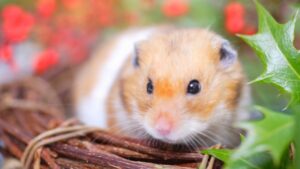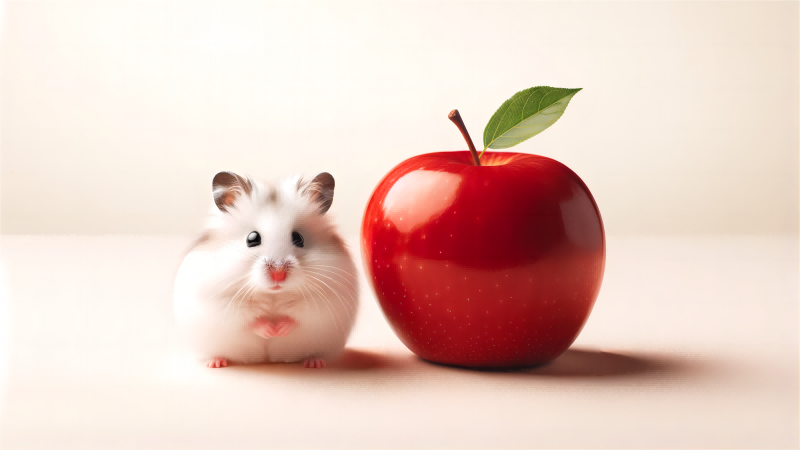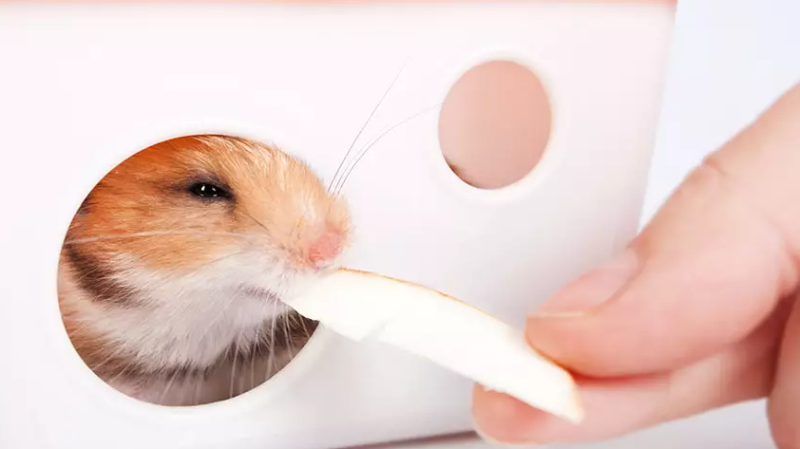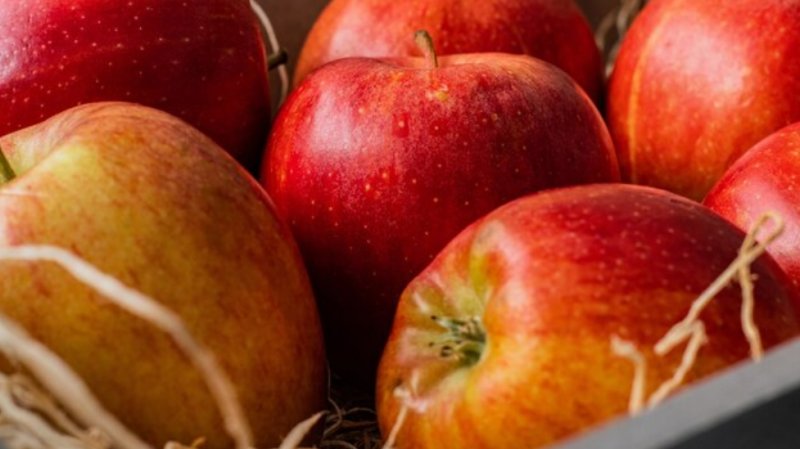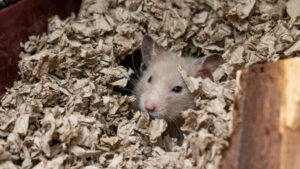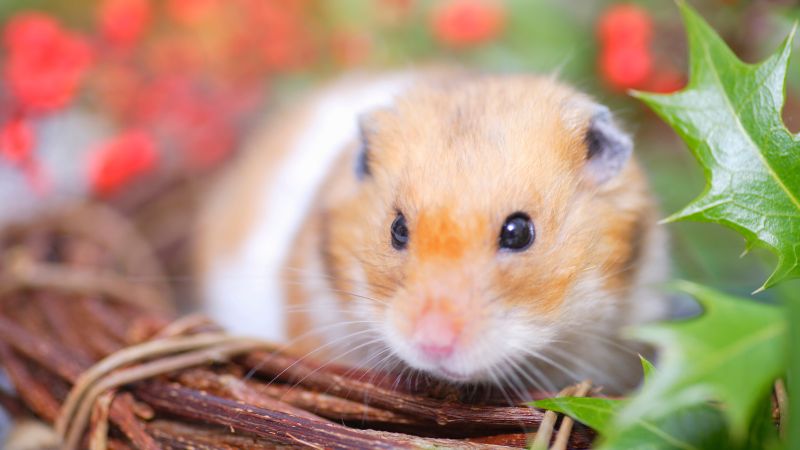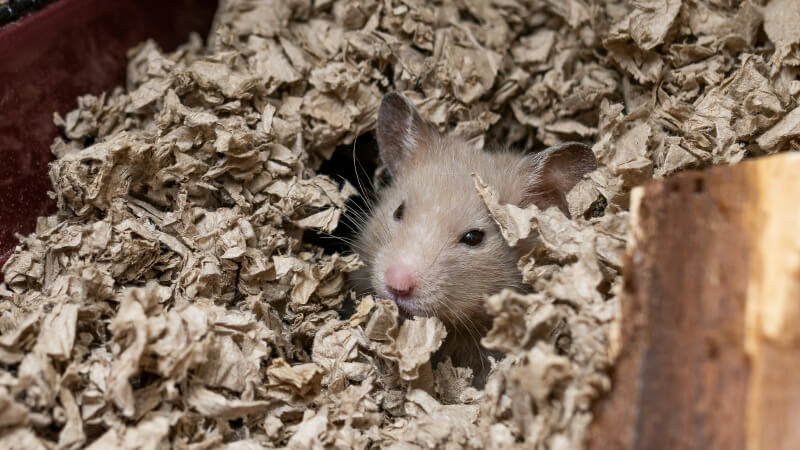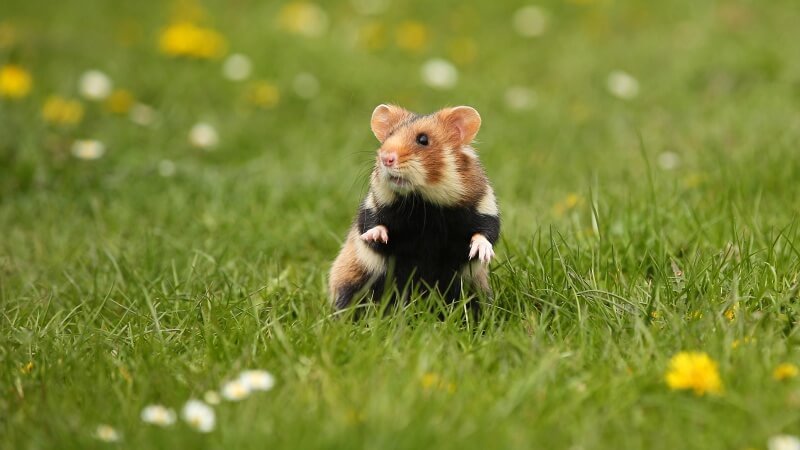Many pet owners often wonder about the types of fruits safe for their furry friends. Among these queries, the question, ‘Can a hamster eat apples?’ is quite common. The answer is yes, but with some precautions. Dive in to discover more about hamsters and their apple adventures.
A healthy delight or a fairytale danger?
The idea of quick, nutritious snacks inevitably leads us to think about apples. So, when you have a little furball with a penchant for munching, it’s tempting to consider offering your hamster a bite of apple.
(Need more information? Dive into our guide on optimal hamster nutrition.)
However, with the diverse dietary needs of animals, the question arises: Can hamsters safely munch on apples? While the primary source of their diet should be a reliable commercial hamster feed, complementing it with bits of apple can be an excellent choice. They not only get vital nutrients and vitamins from apples but also a chance to gnaw and maintain their teeth. And of course, they’re delicious! Think of it as serving them a piece of (apple) cake.
The apple advantage for hamsters?
While it’s an exaggeration to claim that consuming apples ensures zero doctor visits, this fruit indeed offers health benefits for your hamster.
Incorporating apples into their meals provides balanced nutrition.
Despite their petite and furry appearance, hamsters need a well-rounded diet, similar to other mammals, to remain healthy.
Some vital components found in apples include:
-
Vitamin C: Essential for robust immunity, this vitamin also plays a role in the formation of various body structures. While it’s debatable how much hamsters need vitamin C, it’s wise to include it for the potential benefits.
-
Antioxidants: Known to counter harmful free radicals, antioxidants from apples might help reduce the risks of certain diseases, as studies in humans have shown.
-
Fiber: Crucial for hamster digestion, fiber ensures a smoothly operating gut. The apple skin, rich in fiber, is especially beneficial. So, let your hamster enjoy the peel, naturally full of nutrients, while also keeping their teeth in check.
Other nutritional benefits of apples for hamsters
-
Minerals: Apples are a source of essential minerals like potassium, which is crucial for maintaining your hamster’s nerve and muscle cell functions.
-
Natural Sugars: Although moderation is essential due to the sugar content, the natural sugars in apples provide quick energy for your active hamster.
How much apple can I give a hamster?
You can give your hamster a small piece of apple, about the size of a dime or two. However, there are some considerations for preparing apples safely:
-
Introduce slowly: If it’s your hamster’s first time trying apple, start with a tiny piece to see if there’s any adverse reaction or if your hamster likes it.
-
Moderation is key: While apples can be a healthy treat, they should not constitute a major portion of your hamster’s diet. Once or twice a week is sufficient.
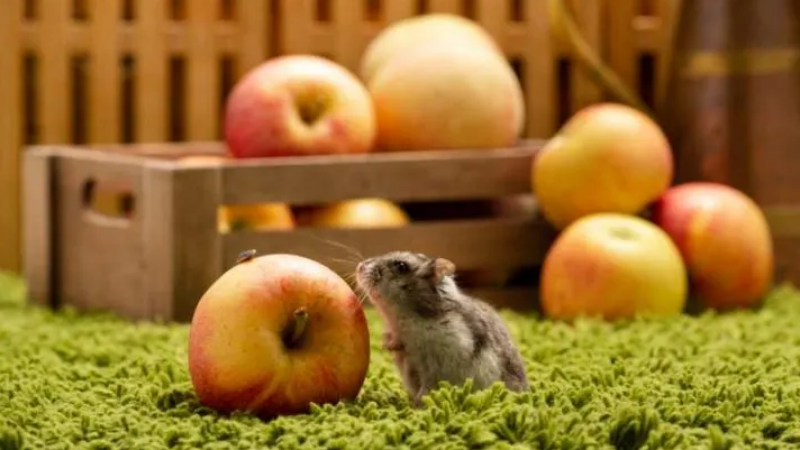
-
Avoid seeds: The apple’s pulp is safe, but some parts are a no-go zone. The seeds, for instance, can be toxic to hamsters. Containing traces of cyanide, these seeds might be harmless to humans but can be fatal for hamsters. Hence, they always serve them seed-free apple pieces.
-
Consider sugar content: Apples contain natural sugars. Dwarf hamsters, in particular, are prone to diabetes, so be especially cautious with the quantity and frequency when feeding them apples.
-
Wash thoroughly: Contamination or bacteria on the apple’s surface can also harm hamsters due to their small size. So, wash the apple thoroughly before offering it.
Always observe your hamster after introducing any new food to ensure there are no adverse reactions. If in doubt, consult with a veterinarian specializing in small animals.
How many apples can a hamster eat in a week?
Feed your hamster apples 1-2 times a week. Do not overfeed fruits since they are high in sugar.
Moderation is key
Introducing new foods should be done cautiously to prevent digestive issues. And while apples are nutritious, their sugar content demands restraint. Dwarf hamsters, susceptible to diabetes, should have limited apple portions.
It’s also wise to introduce a range of healthy snacks to ensure diverse nutrition.
Remember, while treats like fruits are great, their primary food source remains vital for comprehensive nutrition.
Storing and serving tips
-
Storing: Keep apples in a cool place to retain their freshness. If you’re saving a portion for your hamster, ensure it’s stored in the refrigerator and brought to room temperature before serving.
-
Serving: Beyond removing the seeds, consider grating the apple for younger or smaller hamsters, making it easier for them to eat.
A bite into hydration
Considering that a significant portion of an apple is water, it can serve as an additional hydration source, especially during warmer months. However, always ensure that your hamster has constant access to fresh drinking water.
Other Safe Fruits for Hamsters
While apples are a hit, hamsters can also benefit from other fruits, including blueberries, strawberries, and bananas. These fruits can be a delightful change and ensure your hamster gets a mix of vitamins and minerals. As always, moderation is key, and introducing any new food should be done slowly and in small amounts.
Wrapping up
I hope you have learned everything there is to know about “Can a hamster eat apples?” from our article. Apples are a tasty and nutritious food for your hamster. Make sure it’s clean, seedless, and served in moderation. Apples in your hamster’s diet can be useful both nutritionally and as a trust-building exercise. Next time you eat an apple, share a slice with your pet!
Reference
-
Nutrient Requirements of Laboratory Animals: Fourth Revised Edition, 1995. Available
here.
